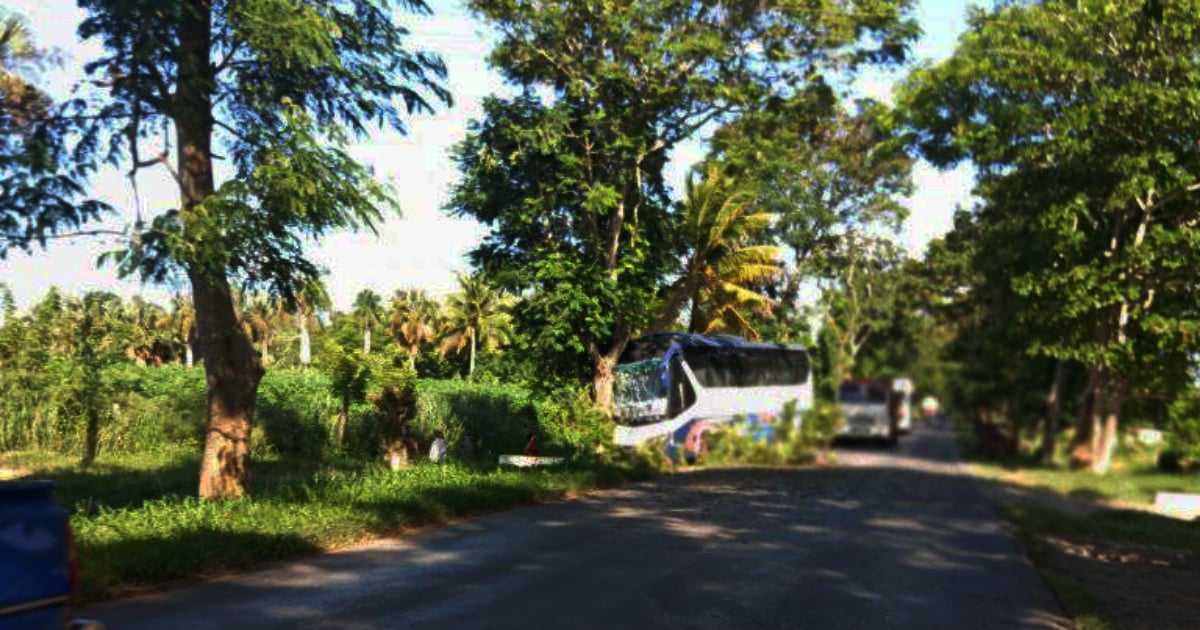The stretch of the Central Highway from Ciego de Ávila to Camagüey has once again been the scene of a tragic accident in Cuba. On Thursday, a bus from the Tourist Transport Company (TRANSTUR) veered off the road and crashed into a tree.
"Around four o'clock in Suferry, entering Ciego de Ávila from Camagüey. I don't have details. It doesn't seem serious," reported a user in the Facebook group 'Accidentes Buses & Camiones,' sharing an image of the incident. Fortunately, no fatalities or serious injuries were reported.
Photos shared on the group showed the bus's frontal collision with what appears to be a Cuban cedar or acacia tree, causing the windshield and bodywork to shatter. The causes of the accident remain unknown, and neither the authorities, the company, nor the official press have commented on it.
Recurring Danger Zone
Several users commented that it was the same stretch of the Central Highway where an accident occurred on July 31, resulting in the deaths of two people, one of them a truck driver who also crashed into a tree.
"Again, the same stretch where the truck driver died days ago," noted one user. "That stretch just won't catch a break," agreed another. "There is a very dangerous dip in that section. If you're not familiar with it, it can surprise you. That's where the passenger truck driver died last month," explained a third user.
In late August, an accident on the National Highway in the Irijoa to Arroyo Blanco stretch, in the Palma Soriano municipality of Santiago de Cuba, left nine injured, two of them seriously, when a TRANSTUR bus collided with a trailer belonging to the EMGEF Electric Energy Generation Group, which was heading to Contramaestre.
Beatriz Johnson Urrutia, the first secretary of the Party in the province, reported that the TRANSTUR Havana bus was transporting 40 Cuban passengers from the capital to Santiago de Cuba.
In late April, an accident between a TRANSTUR bus and a ZIL-130 truck in the Madruga municipality, in the province of Mayabeque, resulted in two fatalities, four major injuries, and several minor injuries. The bus was carrying workers from the Ernesto Guevara Thermoelectric Plant in Santa Cruz del Norte, as reported by journalist María Amalia Pérez Suárez of Radio Mayabeque on her Facebook profile. The truck belonged to the Madruga loading base in the same province.
In mid-March, a TRANSTUR bus and a military jeep were involved in a non-injury accident in Santa Clara, Villa Clara. The incident occurred at the intersection of Máximo Gómez and Martí streets, according to several witnesses on social media.
A June 2018 report published by the official media outlet Ahora identified the state-run TRANSTUR company as the entity responsible for the highest number of traffic accidents in the region. As the transport provider for the Ministry of Tourism of Cuba, TRANSTUR is the most significant company of its kind in the country. The company had a fleet of over 7,000 vehicles at that time and offered services to other companies such as Cubacar, Havanautos, and Rex for car rentals.
TRANSTUR Buses, dedicated to bus rentals, provides buses with drivers included to agencies such as Cubatur, Cubanacán, Havanatur, Gaviota, Sol y Son, and Paradiso, among others.
Key Questions About TRANSTUR Accidents
Given the recurring incidents involving TRANSTUR buses, many are left with questions about the safety and operational protocols of the Tourist Transport Company. Here are some key questions and answers to provide more insight.
What are the primary causes of accidents involving TRANSTUR buses?
While specific causes can vary, common factors include road conditions, driver error, mechanical failures, and lack of proper maintenance. Detailed investigations are often required to determine the exact causes.
How does TRANSTUR ensure the safety of its passengers?
TRANSTUR claims to follow stringent safety protocols, including regular vehicle maintenance and driver training. However, recurring incidents raise questions about the efficacy of these measures.
What actions are being taken to improve road safety in Cuba?
Efforts to improve road safety in Cuba include infrastructure improvements, increased traffic law enforcement, and public awareness campaigns. The effectiveness of these measures is still under scrutiny.
